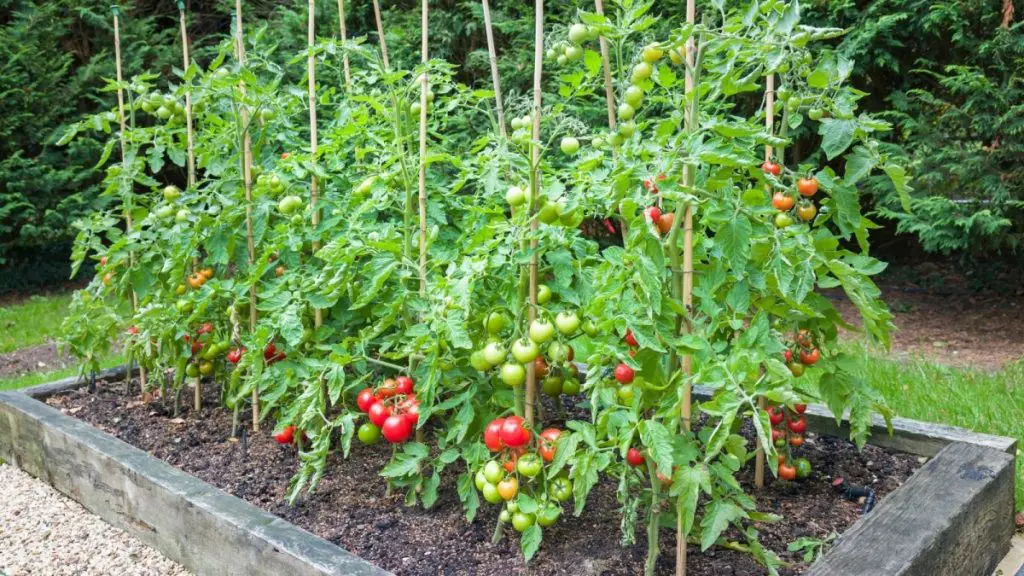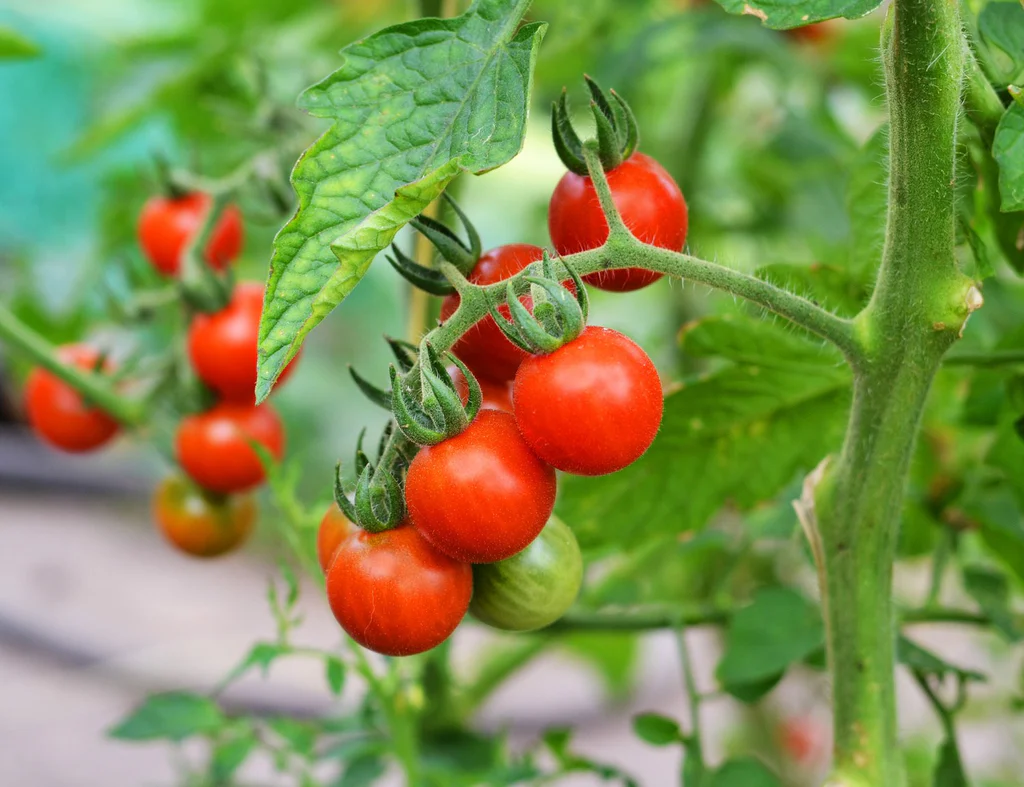Overview
The home gardeners have one of the most popular and satisfactory plants which is the tomatoes. Their sunny taste,Kitchen versatility, and healthful abundance are reasons they need to be in any backyard or container garden. However, planting is highly vital in case one wants to get juicy and tasty tomatoes.
Being a first time gardener or an advanced one, you can find something useful here in case you desire to read more about the process of planting tomatoes and having a wonderful harvest of this tasty fruit.
Why Grow Tomatoes?
Before diving into the planting process, it’s worth understanding why tomatoes are such a popular choice:
- Not particular about cultivation: Tomatoes are not fastidious in their requirements, and need only a little tender care.
- High yield: A plant may produce dozens of tomatoes.
- Nutritional cost: It is wealthy in nutrients C and K, potassium, folate, and antioxidants, which includes lycopene.
- Culinary versatility: Toss them in salads, sauces, soups and many others.
Step 1: Choosing the Right Tomato Variety
When it comes to planting tomatoes the initial thing is to choose the right type. There are two types of tomato varieties:
1. Determinate (Bush) Tomatoes
- Grow to a fixed height (usually 3 to 4 feet).
- Produce fruit all at once, then stop growing.
- Ideal for container gardening and small spaces.
2. Indeterminate (Vining) Tomatoes
- Continue to grow and produce fruit until killed by frost.
- Require staking or caging.
- Best for gardeners who want a continuous harvest.
There is also the option of heirloom and hybrid. Heirlooms are open pollinated and full of flavors whereas hybrids are bred to be disease resistant and high yielding.
Popular varieties:
- Roma (determinate): Great for sauces.
- Cherry (indeterminate): Sweet and bite sized.
- Beefsteak (indeterminate): Large and meaty, great for sandwiches.
Step 2: When to Plant Tomatoes
Tomatoes are frost sensitive and warm season crops. Time plays an important role:
- Sow seeds indoors 6 to 8 weeks prior to the last favorable frost.
- Outdoor transplanting should be done when frost threat has passed and the soil has temperate readings above 60 deg F (16 deg C).
This translates to planting in mid March to early June in most areas.

Step 3: Preparing the Soil
Tomatoes need rich, nicely-drained soil for choicest increase.
Soil Requirements:
- pH: 6.Zero to six.8
- Texture: Loamy, with properly moisture retention and drainage
- Nutrients: High in natural matter
Steps to Prepare Soil:
- Clear the vicinity of weeds and particles.
- Loosen soil to an intensity of 12 to 18 inches.
- Mix in 2–three inches of compost or well rotted manure.
- Add natural fertilizer excessive in phosphorus to inspire root development.
You can also perform a soil take a look at to decide nutrient wishes and modify thus.
Step 4: Transplanting Tomato Seedlings
Whether you’ve grown your own seedlings or purchased them from a nursery, it’s time to transplant.
Hardening Off:
Before planting, gradually expose seedlings to outdoor conditions over 5 to 7 days to reduce transplant shock.
How to Transplant:
- Choose a cloudy day or late afternoon to plant.
- Dig a deep hole then tomatoes can be planted deeper than most vegetables.
- Remove lower leaves from the stem, leaving the top 3 to 4 sets.
- Place the seedling in the hole so that most of the stem is buried. Roots will grow from the buried stem, strengthening the plant.
- Fill the hole and gently press the soil around the plant.
- Water thoroughly after planting.
Step 5: Spacing and Layout
Proper spacing ensures good airflow and reduces disease risk.
- Indeterminate varieties: 24–36 inches apart
- Determinate varieties: 18–24 inches apart
- Rows: Leave 3–4 feet between rows for easy access
If growing in containers, choose pots at least 5 gallons in size per plant.
Step 6: Watering Tomatoes
Tomatoes need consistent moisture to prevent cracking and blossom-end rot.
Watering Tips:
Water deeply and infrequently (1 to 2 inches according to week).
- Focus on the bottom of the plant, not the leaves.
- Morning watering is a quality to keep away from fungal problems.
- Use drip irrigation or a soaker hose if feasible.
Do not over water. Too much water will make the roots rot and lose flavor.

Step 7: Mulching
Mulch is essential to keep the soil moist, suppress weeds, and regulate temperature.
Best Mulch Materials:
- Straw
- Shredded leaves
- Grass clippings (dried)
- Compost
Apply 2 to 3 inches of mulch around each plant, leaving space around the stem.
Step 8: Providing Support
Tomato plants, especially indeterminate types, need support as they grow.
Options:
- Tomato cages: Easy to install and manage.
- Stakes: Tie plants to stakes with soft twine or cloth every 8 to 10 inches.
- Trellises: Ideal for large gardens or raised beds.
Step 9: Fertilizing
Tomatoes are heavy feeders, and proper fertilization helps maximize boom and fruit manufacturing.
Fertilizing Schedule:
- At planting, Use a balanced fertilizer (10-10-10 or similar).
- Every 3 to four weeks at some point of the growing season, Side gets dressed with compost or tomato unique fertilizer.
Avoid an excessive amount of nitrogen, it causes leafy increase with little fruit.
Step 10: Pruning and Maintenance
Regular care helps keep your tomato plants healthy and productive.
Tips:
- Remove suckers (small shoots among stem and branch) to improve airflow.
- Inspect flowers often for yellowing leaves, wilting, or spots (symptoms of disease).
- Use accomplice flora like basil, marigold, or onions to deter pests.
- Practice crop rotation to prevent soil borne illnesses.
Common Pests and Diseases
Knowing what to watch for helps protect your crop.
Pests:
- Aphids
- Tomato hornworms
- Whiteflies
- Cutworms
Use neem oil, insecticidal soap, or hand-pick pests when needed.
Diseases:
- Early blight
- Late blight
- Fusarium wilt
- Blossom-end rot (caused by calcium deficiency)
Prevent problems by watering at the base, mulching, and rotating crops annually.
Step 11: Harvesting Tomatoes
Tomatoes typically ripen 60 to 90 days after transplanting, depending on the variety.
When to Harvest:
- Fruit is fully colored (red, yellow, orange, etc.).
- Slightly soft to the touch but not mushy.
- Comes off the vine with a gentle twist.
If frost is expected, harvest green tomatoes and let them ripen indoors in a warm place.
Tips for Success
- Apply natural booster such as compost tea or seaweed solution.
- Remove flowers on young transplants to allow them to concentrate on root development.
- Disbud yellow or diseased leaves immediately you observe them.
- Make a garden journal to see what is most successful in your region and in your soil.
Final Thoughts
Tomatoes can be grown both as a science, and as an art. With these detailed guidelines on tomato planting, you are now guaranteed of a good yield of tomato fruits that are juicy and delicious. Tomatoes may either be pampered in a backyard or raised bed or even in a container on your balcony as long as they are given the required care and attention, they can grow.

